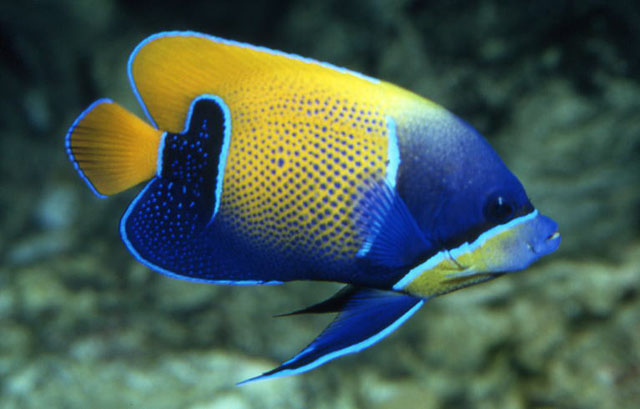| Pomacanthidae (Angelfishes) |
| 28 cm TL (male/unsexed); max. reported age: 15 years |
|
reef-associated; marine; depth range 3 - 40 m, non-migratory |
| Indo-Pacific: Indonesia to Papua New Guinea, north to the Philippines, south to Rowley Shoals and the southern Great Barrier Reef; including Palau and Yap in Micronesia. |
|
Dorsal spines (total): 13-14; Dorsal soft rays (total): 17-18; Anal spines: 3-3; Anal soft rays: 18-18. Description: Juveniles black with light blue curve vertical stripes on the sides. Adults are bright yellow on sides and back, dorsal and caudal fins, with numerous blue spots; head and ventral portion of the body, pectoral and pelvic fins dark blue with numerous light blue spots on the posterior portion of the anal fin and the adjacent caudal peduncle area. Narrow light blue streaks run across the face from below the eye, and on the area just behind the head. Fins edged light blue (Ref. 1602). Body depth 1.9-2.1 in SL. Scales longitudinal series 45-50 (Ref. 90102). |
| Occurs in coral rich areas of clear lagoons, channels, and protected outer reef slopes. Changes to adult pattern is dramatic, and intermediate stage are rarely seen (Ref. 48636). Often solitary. Feeds on sponges and tunicates. Uncommon (Ref. 9710). Highly prized aquarium export (Ref. 37816). |
|
Least Concern (LC); Date assessed: 08 October 2009 Ref. (130435)
|
| harmless |
Source and more info: www.fishbase.org. For personal, classroom, and other internal use only. Not for publication.

